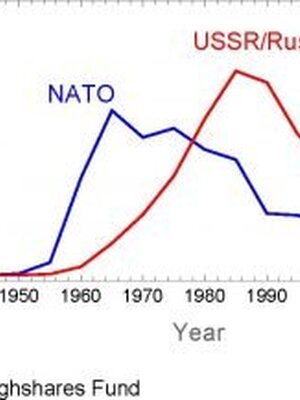
by Michael Lehman
October 3, 2016
Secrets: Asked to name a strategic intelligence system of comparable significance prior to the 1956 advent of the U-2, Cold War history often suggests the aircraft’s revolutionary high-altitude photography had no predecessor or peer. The Central Intelligence Agency’s U-2 imagery, soon augmented by satellites, displaced but did not replace a similarly predominant but little known predecessor, the Air Force’s Atomic Energy Detection System (AEDS). Operated by a secret unit, AFOAT-1, the AEDS utilized fallout sampling and other techniques to produce remarkably accurate qualitative and quantitative data on Soviet nuclear testing and plutonium-239 inventories. In the first decade of the Cold War, this highly classified data constituted the bulk of empirical evidence available on Soviet capabilities in the national intelligence estimates process. Yet, its distortion by military analysts converted United States nuclear dominance into bomber and missile “gaps” that implied American weakness, a problematic fable that U-2 imagery finally overturned.
Problems: Historian Sean Malloy recently outlined the policy of Manhattan Project director General Leslie Groves to suppress all information about fallout, in fear of potential ramifications from comparisons of the effects of nuclear weapons to already-outlawed chemical and biological weapons. The intelligence value of radioactive fallout from nuclear explosions quickly became a parallel impetus to secrecy about it at the Pentagon.
Los Alamos Laboratory director J. Robert Oppenheimer also contributed to the development of technologies that the AEDS utilized to reveal the Soviet nuclear program. After AFOAT-1 detected the first Soviet Union test in 1949, pressure on the Atomic Energy Commission by the Air Force to develop thermonuclear weapons to maintain a strategic advantage was met with resistance from Oppenheimer and other scientific advisers for reasons that eventually distilled publicly into accusations impugning his loyalty. Those accusations formed the ostensible basis for the 1954 hearing that stripped Oppenheimer of his security clearance. Behind this public justification was a more significant secret origin for the conflict, GABRIEL, an AEC study began in 1949 that posed the question: How large a nuclear attack on the Soviet Union was possible before its fallout would threaten global health? Initial calculations suggested exceeding sixty megatons of cumulative yield would lead to untenable consequences.
Limitations: Confirmed by the ten and fifteen megaton yields of the first two American thermonuclear tests, the Strategic Air Command’s General Curtis LeMay confronted the fact that the scale of their fallout meant an attack on the USSR with more than a handful of these weapons threatened Americans as well as the Russians. Corroborating evidence that suggested GABRIEL’s premise was the primary source of Oppenheimer’s dispute with the Air Force was driven home in the recently declassified 1954 Oppenheimer hearing transcript. Fear that GABRIEL’s frank acknowledgment of its perils suggested hesitancy to use such a problematic technology posits fallout breaks down, rather than strengthens, deterrence. Curiously, the term itself was omitted in the transcript’s 3,000 plus pages of narrative suffuse with conflict over the policy implications of thermonuclear weapons, a telling exclusion pointing to the central role of the fallout dispute in ending Oppenheimer’s career. The Air Force initially treated such stark limits on the use of nuclear weapons as inconsequential.
By 1958 data collected through CROWFLIGHT, a high-altitude fallout sampling program performed by the Air Force’s U-2 unit confirmed the basic accuracy of GABRIEL’s original assessment that fallout’s threat imposed stark limits on the conduct of nuclear war. That the United States willingly joined with the United Kingdom and the Soviet Union in abandoning atmospheric nuclear testing in 1963 suggests this emerging evidence of fallout’s risks significantly augmented political concerns about radioactive fallout in shaping U.S. policy.
Mike Lehman (Ph.D., History 2016) served as a library and editorial assistant with ACDIS, authoring an earlier brief history of the program. Background references to this summary can be found in, “Nuisance to Nemesis: Nuclear Fallout and Intelligence as Secrets, Problems, and Limitations on the Arms, Race, 1940-1964,” available as a free PDF download through the University of Illinois IDEALS website at http://hdl.handle.net/2142/90554